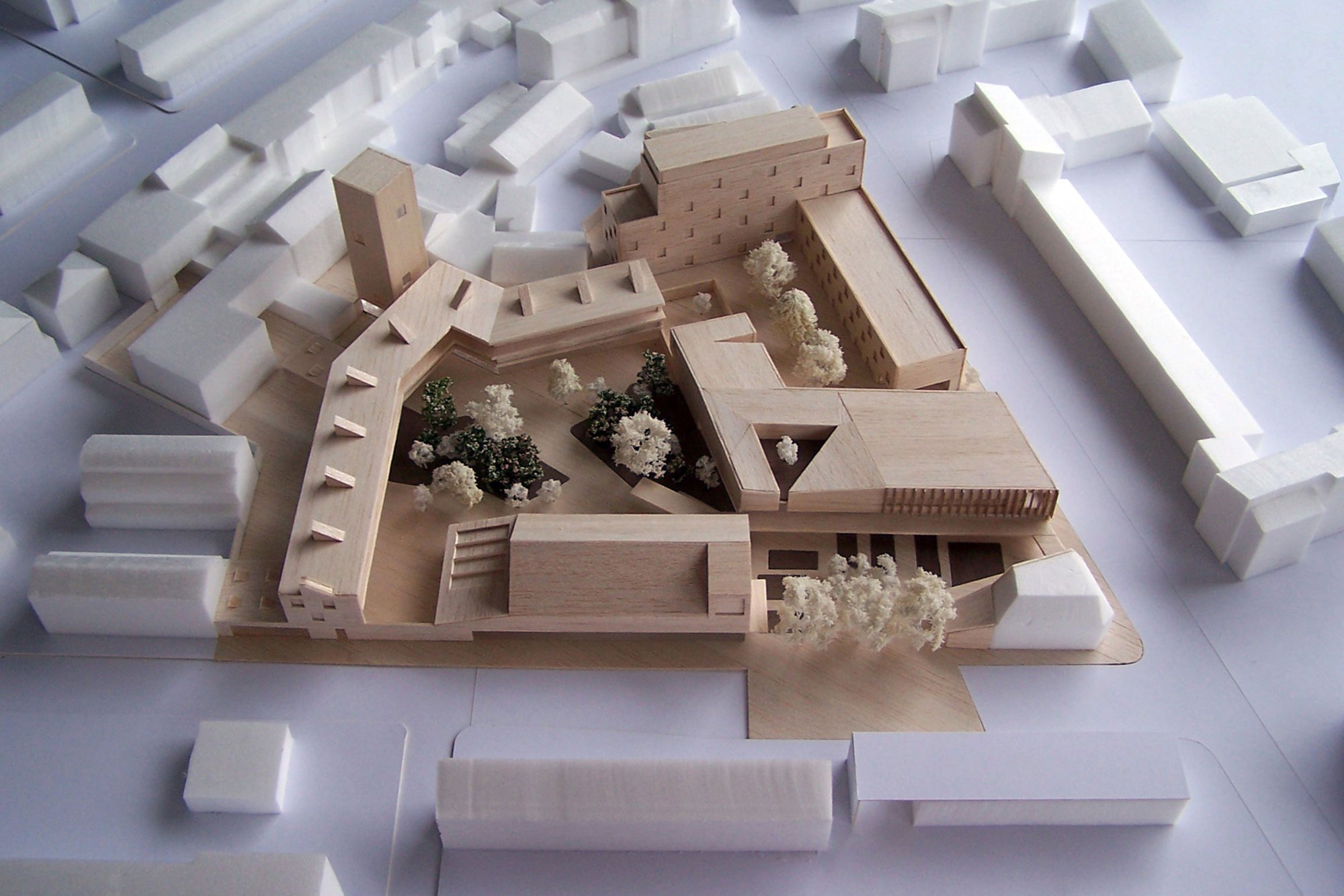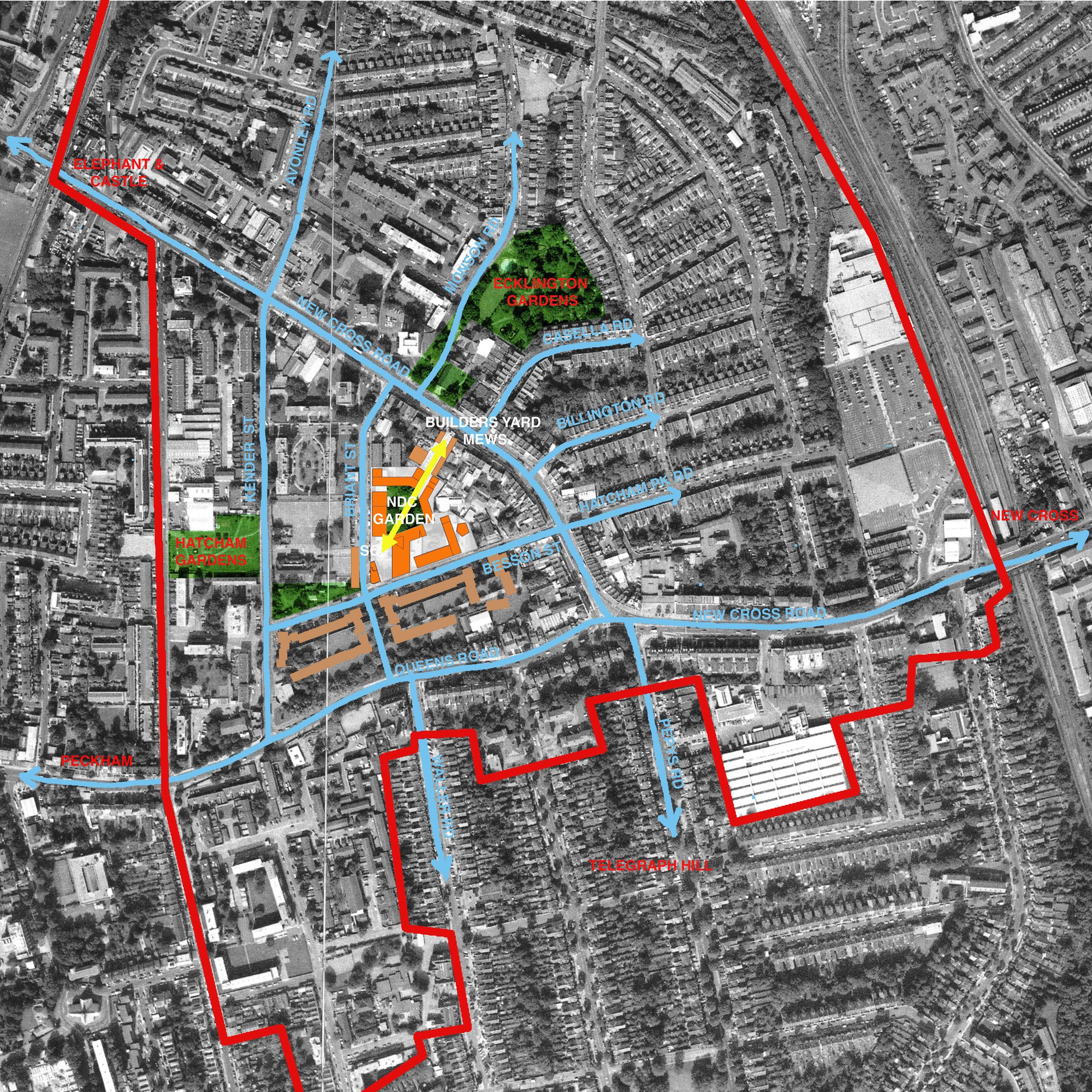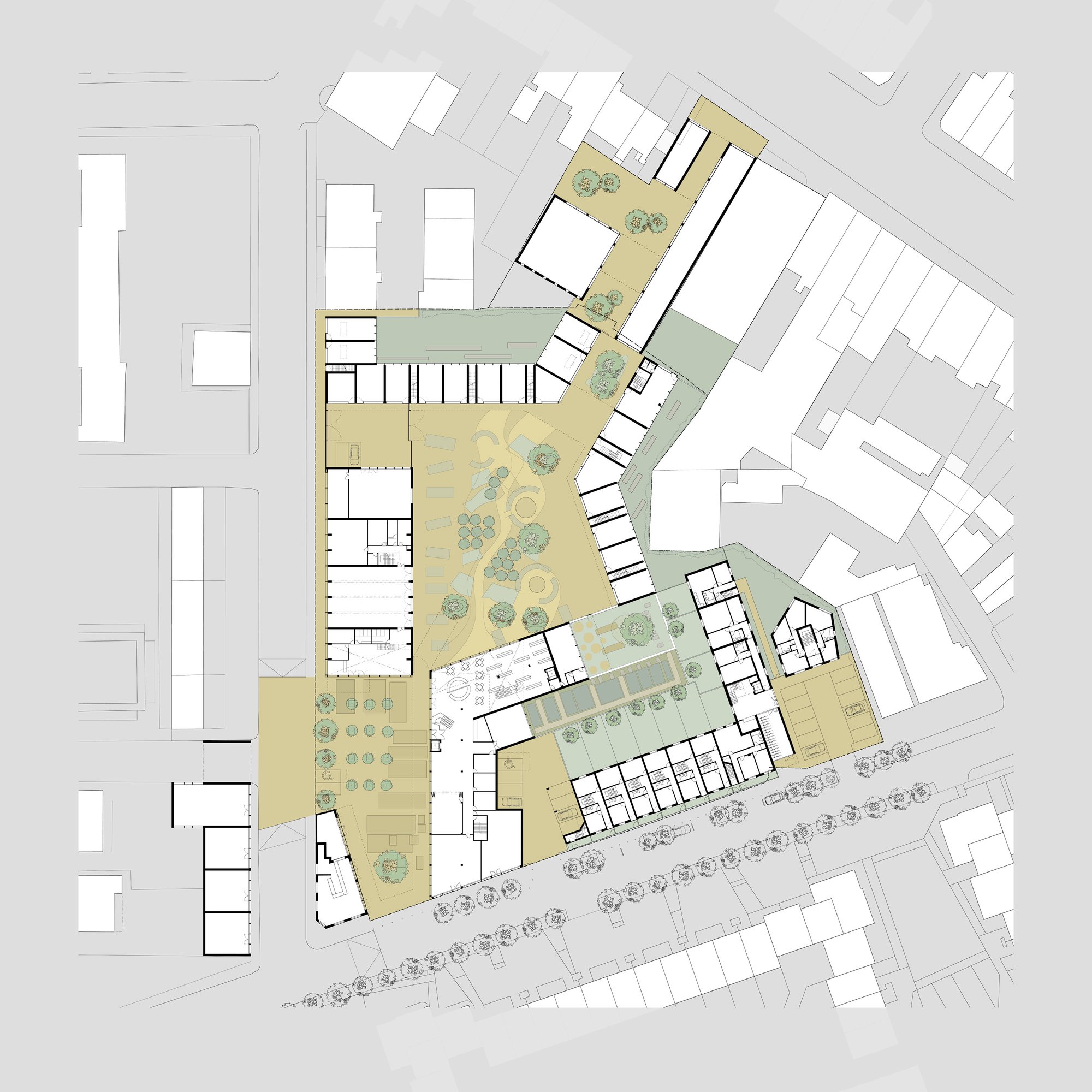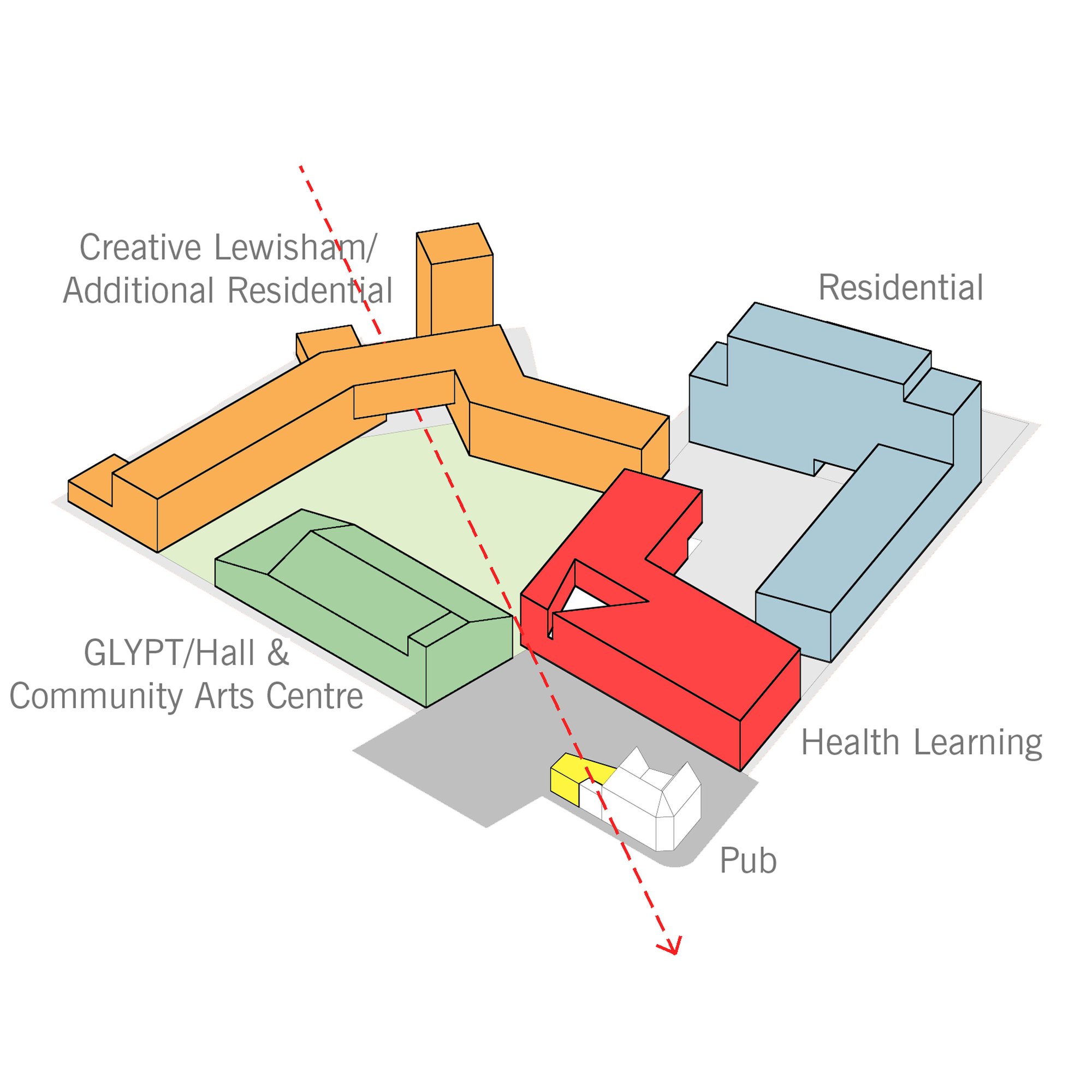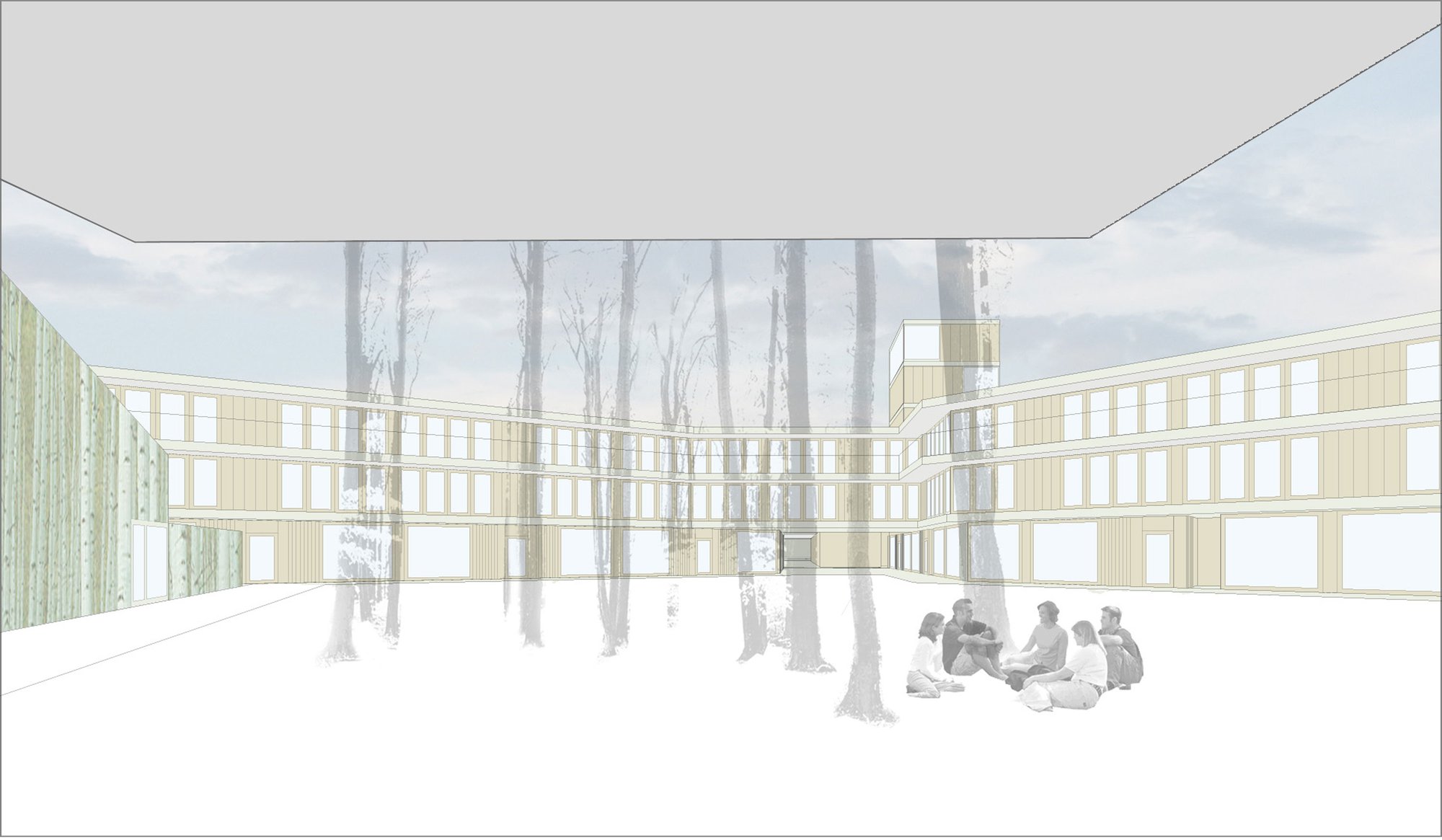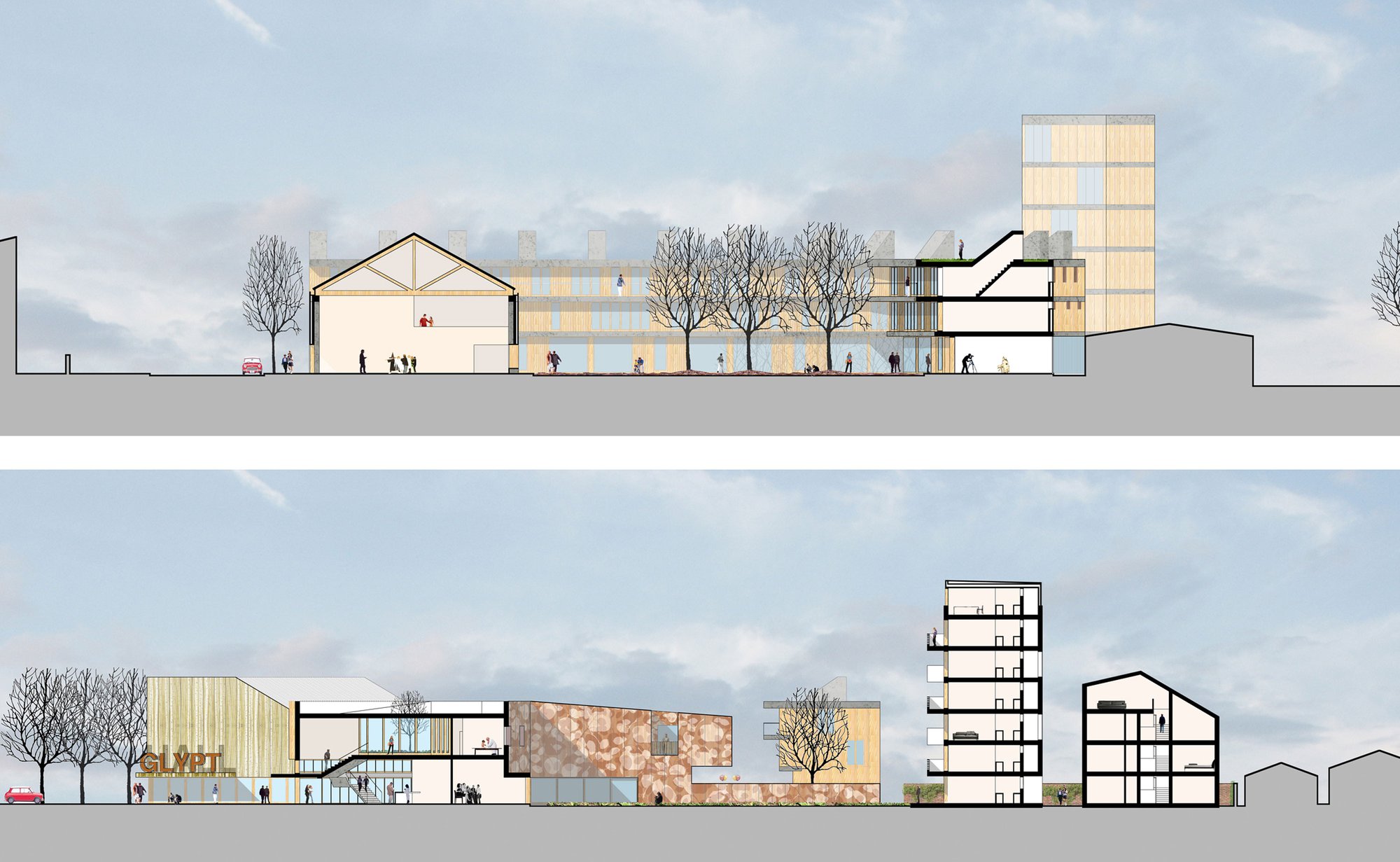New Cross Gate
London
2005–2006
New Cross Gate Trust is a social regeneration charity working to support this South London neighbourhood. Our practice was one of six shortlisted to design a one-hectare scheme including a new home for GLYPT (Greenwich & Lewisham Young Peoples’ Theatre), a public library, health centre and studios for creative businesses and artists, cross-subsidised by housing. The scheme establishes a new paradigm for regeneration.

